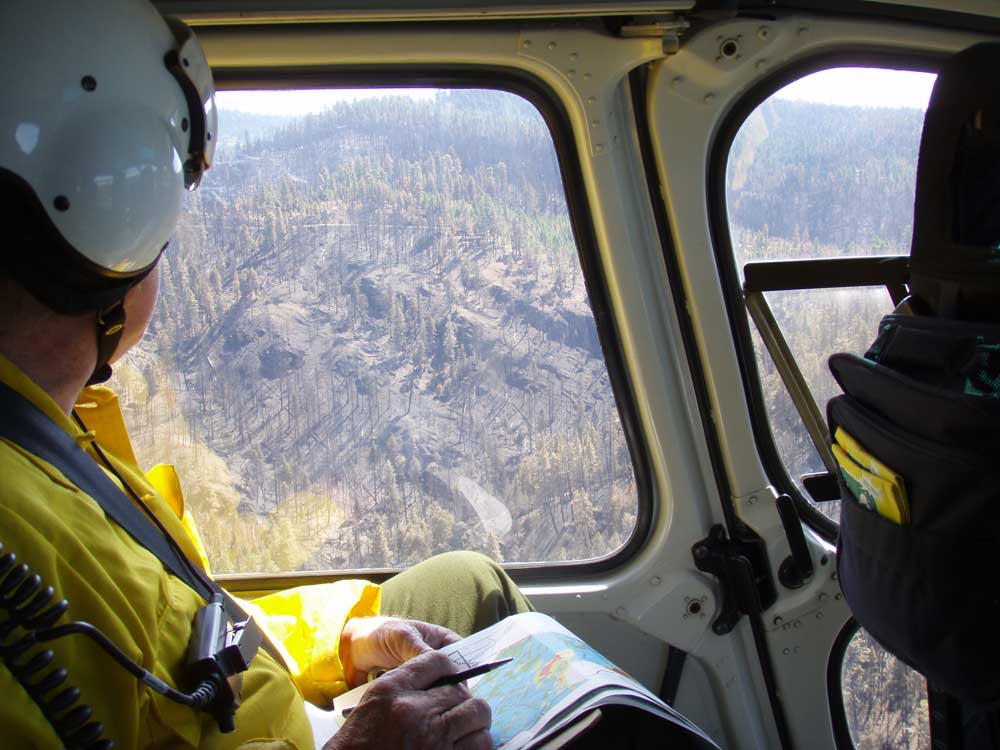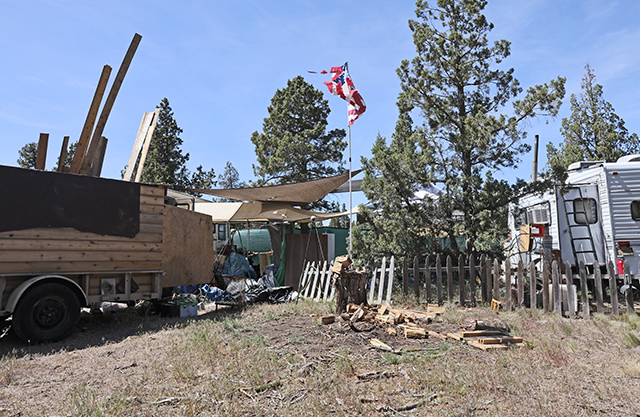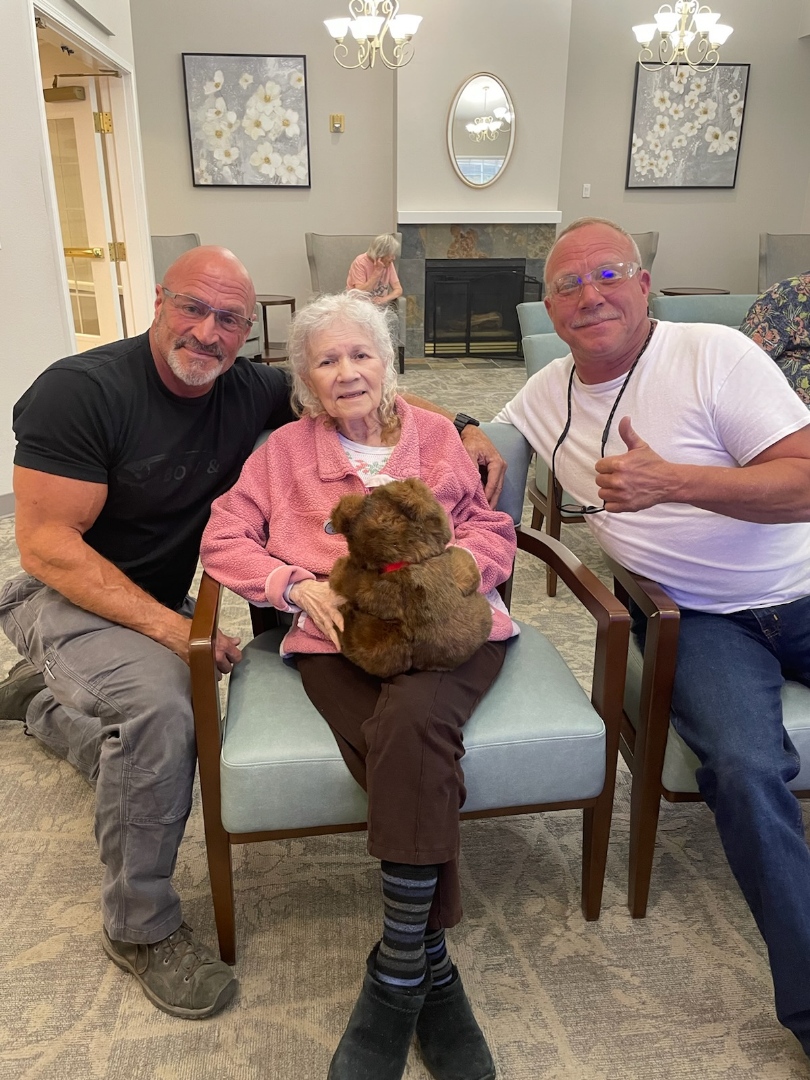Salvage logging set for burnt Ochoco woods
Published 12:00 am Thursday, June 4, 2015

- Ochoco National Forest / Submitted photoJim David, soil scientist for the Ochoco National Forest, scans over woods charred by the Bailey Butte Fire late last July. The U.S. Forest Service granted a request by the Ochoco forest to expedite a salvage logging plan for timber burned in the fire. The buyer said such a speedy turnaround will avoid loss in wood value caused by bugs and fungus.
Burned by wildfire last summer, some woods in the Ochoco National Forest are set to be logged soon.
Such a quick turnaround allows loggers to cut trees before the burned wood deteriorates and loses value, said Chuck Burley, public affairs manager for U.S. operations for Interfor.
The international company Interfor, with a mill in Gilchrist, is headquartered in Vancouver, British Columbia.
Interfor was the high bidder at a sealed-bid auction Monday, winning the purchase of 2.9 million board- feet of ponderosa pines, Douglas fir and white fir, said Slater Turner, Lookout Mountain District ranger for the national forest.
The timber company bid $111.63 per board foot, so the total for the sale comes out to more than $323,000.
The next-highest bidders were Butte Timberlands and Ochoco Lumber, according to a national forest document.
Butte put in a bid of $42.19 per board-foot and Ochoco $36.03 per board-foot.
“We intend to start logging as soon as we can,” Burley said Tuesday. Logging will likely begin within a month, as soon as Interfor finishes paperwork on the project and moves equipment into the woods. The logs are set to be milled in Gilchrist. The mill produces appearance- and industrial-grade boards, used to make door and window frames and paneling.
In conducting a sealed-bid auction, the Ochoco National Forest had asked a minimum bid of $25.71 per board-foot, or $74,560.38 for the entire sale.
Burley said Interfor did not base its bid on what others might offer.
“We appraise it on what it is worth to us and whether we think we can make a profit on it,” he said.
The national forest applied for and received an “emergency situation determination” from the U.S. Forest Service headquarters in Washington, D.C., to make for the quick sale.
“We want to recoup as much as we can of the taxpayer investment,” Turner said. The investment was the time and money the Forest Service put into the managing the woods before the fire.
Interfor encourages the Forest Service to issue emergency approval of salvage logging projects, Burley said. If trees burned by a fire sit a year or longer, their value drops considerably because of damage by bugs and fungus.
The sale includes logging on 300 acres and removing hazard trees, or trees in danger of falling, along 19 miles of forest roads. Sparked by a July 14 lighting strike on private land, the Bailey Butte Complex burned more than 16 square miles, or 10,272 acres. More than 12 square miles, 7,789 acres, were in the Ochoco National Forest. Firefighters contained the fire July 26.
Environmental groups regularly oppose post-fire logging. The logging removes what has become a rare piece of the landscape in Central Oregon — burnt woods — said Karen Coulter, director of the Blue Mountains Biodiversity Project in Fossil. Removing the trees could cause harm to the land.
“Burned areas are much more vulnerable to impacts, including erosion and sedimentation of streams,” she said. “And if you don’t leave large, old logs and snags in place, you lose that much structure in the future for old-growth habitat.”
The emergency approval does not allow for objections, but the plans are still open to lawsuits. So far there has not been any legal challenges.
The Bailey Butte fire was part of the Waterman Complex of fires, which also consisted of the 2,229-acre Toney Butte Fire and 15-acre Junction Springs Fire. The Bailey Butte Fire is the only one of the three to have a salvage logging sale.
Along with salvage logging, the Bailey Butte Fire project includes some replanting where the fire severely burned the woods and riparian restoration along six miles of streams.
The logging and replanting will not occur in the Ochoco Divide Research Natural Area although the fire burned through the area, Turner said. The 1,920-acre area has been set aside for research purposes as an undisturbed forest since 1935.
— Reporter: 541-617-7812,
ddarling@bendbulletin.com






